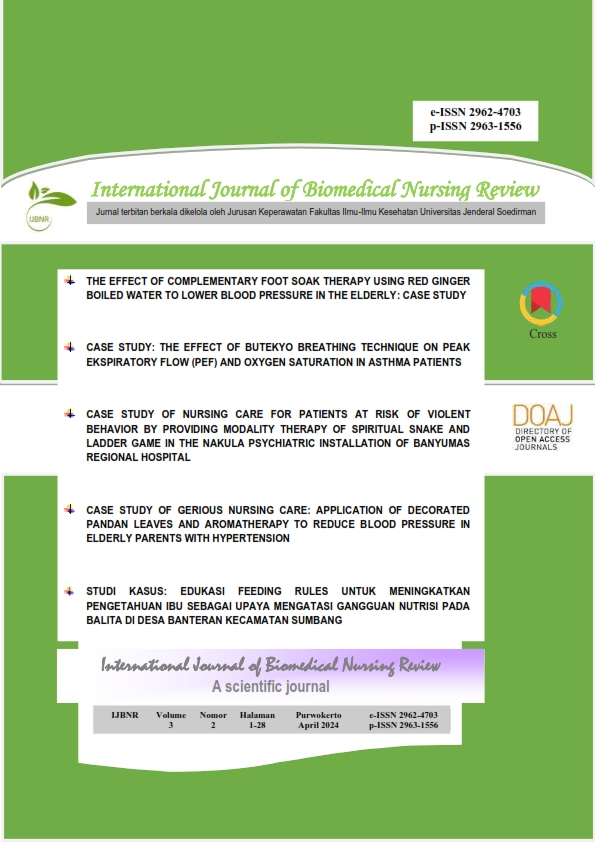THE EFFECT OF BUTEKYO BREATHING TECHNIQUE ON PEAK EKSPIRATORY FLOW (PEF) AND OXYGEN SATURATION IN ASTHMA PATIENTS: CASE REPORT
Abstract
Introduction: Asthma is one of the most frequently occurring chronic diseases and can be experienced by people of all ages. In asthma patients, problems with less effective airway clearance can arise due to airway spasm. The main management of asthma is maintaining asthma control using asthma management interventions. This case report aims to determine the effect of the butekyo breathing technique on peak expiratory flow (PEF) and oxygen saturation in asthma patients. Purpose: This systematic review aims to determine the effect of the butekyo breathing technique on peak expiratory flow (PEF) and oxygen saturation in asthma patients. Methods: Implementation is carried out based on Evidence Based Practice (EBP). The EBP found concluded that the butekyo breathing technique is a nursing intervention that can be used as an asthma management intervention. Butekyo breathing technique intervention was carried out twice a day for 14 consecutive days. Evaluation of results obtained from monitoring peak expiratory flow (PEF) values using a peak flow meter and oxygen saturation using oxymeter. Discussion: Based on the results of measuring the peak expiratory flow (PEF) value, the APE value before the Butekyo breathing intervention was carried out was an average of 80% to 137.5%. The highest oxygen saturation value appeared at 98%. Conclusion: The results of the implementation that has been carried out are in accordance with evidence based practice (EBP), namely that the butekyo breathing technique has an effect on increasing APE. Patients who had moderate category asthma experienced an increase in peak expiratory flow of 57.5%.








 Kampus keperawatan unsoed
Kampus keperawatan unsoed 

